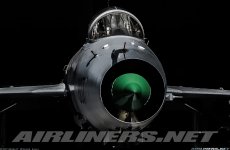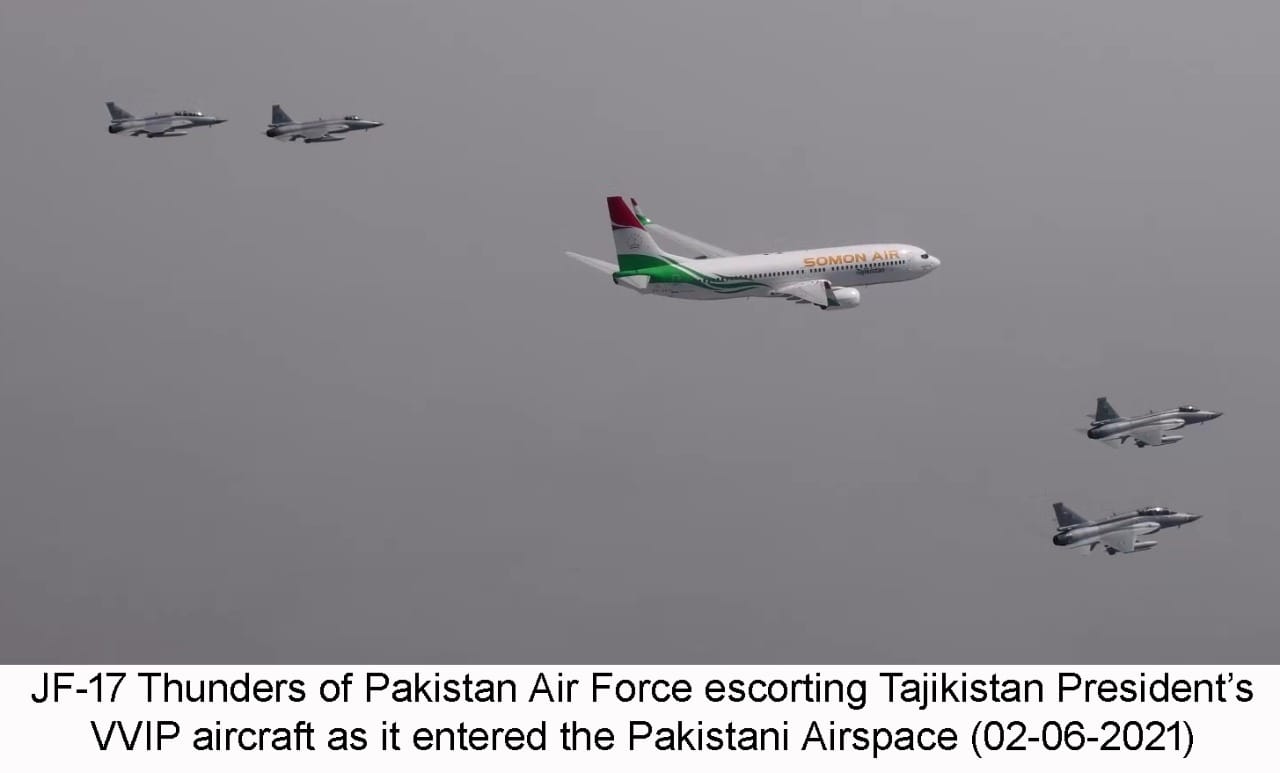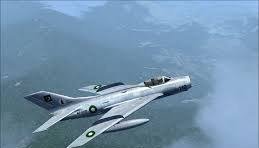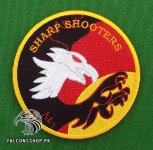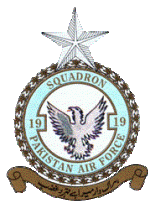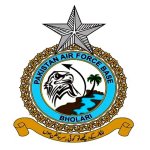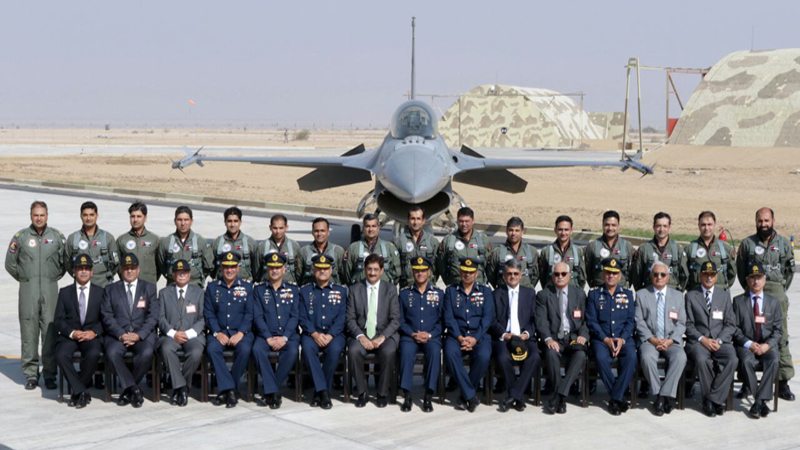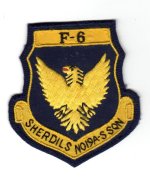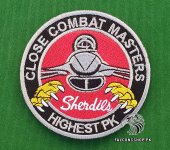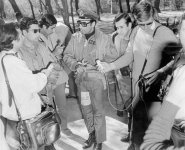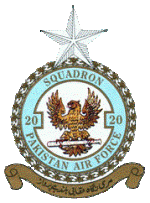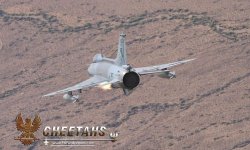Wednesday, June 19, 2024 08:12

Hilal English
The Eagles Ruled the Skies..
September 2017
At the age of 86 the spark in his eyes and the determination in his voice, love for the motherland, from Pakistan’s first sunrise till this moment, reflected in every gesture and ardent will to serve Pakistan in every possible way was charismatically mesmerizing. The interview started with 1965 War's most debilitating and decisive
Pathankot Strike and goosebumps could already be felt as the original narrative was pouring from the horse's mouth himself; the legendary, professionally adept and spirited
Nosey Haider as he is fondly known, Air Commodore (R) Sajad Haider,
Sitara-e-Jurat, the war hero who was leading the
Sherdils of No.19 Squadron gave incapacitating drubbing to Indian Army and Indian Air Force (IAF) with his professional brilliance, precision and through the indomitable spirit and dauntless patriotism of falcons under his command. During the course of conversation, Air Commodore also came out with this revealing opinion that besides Pathankot’s historic strike, Pakistan Air Force (PAF) struck a devastating and decisive blow to Indian 15th Division’s juggernaut’s blitzkrieg towards Lahore on the morning of September 6. According to him, at
Wagah the fierce wall of resistance by the handful of Pakistan Army’s gallant troops which were sparsely deployed and the timely PAF action which averted the capture of Lahore, has not been perceived by the concerned and media in its enormity that how Lahore was perilously threatened. Neither this crucial event merited in Pakistan’s historical war accounts of 1965 War. However, since Indian invaders suffered a collapse due to aggressive battle by our troops and air strike by No. 19 Squadron, it virtually changed the course of war by halting Indian forces’ advance towards Lahore as per their planning. Ironically, the Indian top military commanders of Western Front have unabashedly admitted with accolades of this bold war mission by PAF pilots. Recalling the
Wagah Strike, Air Commodore (then Squadron Leader) Sajad Haider who led the attack shared details as:
“Number 19 Squadron (
Sherdils – war call-sign was
Zambos) that I had the good luck to command was assigned the mission to destroy Indian artillery that was deployed across the
Jassar Bridge in the Sialkot-Shakargarh Sector. One of our infantry battalion was under intense pressure and had suffered casualties as it was being directly targeted by Indian artillery guns. Significantly, in those times there was no precision guided amunition (smart bombs etc.) or modern Navigational Attack Systems to guarantee accuracy and precision in weapons delivery. All had to be done by the pilot through intricate estimation techniques. From precise navigation to arriving at the exact target location was achieved by simple map and watch. The weapon delivery was equally demanding. On that morning as we neared our assigned aircraft, I was disconcerted to see 5 inch rockets loaded instead of 2.75 inch that we had been using all along. This changed the firing parameters drastically but there was ‘not to question why’ situation and I had to swiftly devise firing profile for firing those 5 inch rockets. In consultation with my deputy it was decided to fire at very low angles and as we say ‘when you see the whites of thy enemy’s eyes.’ That was a bit dangerous but then in war things are not always done according to the peace time Standard Operating Procedures (SOPs). As the leader I had to make the hard choice how best to demolish the assigned target. The tactical plan was that once we were near the Initial Point (I.P.) from target area, we would descend steeply to 50-100 feet above ground, at tree top level, avoiding communication lines so as to disappear from Indian radars at Amritsar. That momentous morning at 9:15 a.m. hours, as we were just a few minutes away from the target area I was called by the Air Defence Commander and instructed that the C-in-C had ordered to abandon the assigned mission and immediately divert towards Attari village near Lahore and ‘search and destroy’ Indian invaders advancing rapidly towards the city of Lahore.
After the war we learnt that Indian high command was fully confident to capture Lahore on the same day trusting the element of surprise and superiority of numbers and weapons. Indian General Chaudhry was so confident that he even had invited many journalists including the famous
BBC journalist, Mark Tully for a ‘Victory Reception’ in Lahore Gymkhana arrogating to himself the capture of the
Heart of Pakistan.
It was tryst with destiny when F-86’s of No. 19 Squadron, trained as second-to-none, led by the most irrepressible and skilled Squadron Leader Sajad Haider were to make war history. Waving over the GT Road, between Amritsar and BRB canal they were to demolish and teach the enemy lesson of the lifetime.
Air Commodore Sajad Haider continued...
"What actually happened in our air strike at Wagah is unabashedly and factually recounted by none other than Indians themselves." To interpolate their accounts a few names and their acknowledgements below make incredible reading:
General Harbakhsh Singh, GOC-in-C of the
Western Command, (War Despatches), his Chief of Staff, Major General Jogindar Singh,
(Behind the Scene), Lachhman Singh
(Missed Opportunities) and importantly Colonel Desmond Hyde, leading the blitz against Lahore recall the devastation caused by the 19 Squadron attackers followed by fighters from Sargodha. Their comments are indelibly validated by award winning historians Jagan Mohan and Samir Chopra, in these words: “No.19 Squadron from Peshawar, led by Squadron Leader S.S.
(Nosey)Haider, flew a six aircraft strike mission at 9:30 a.m. hours against the leading elements of Indian army thrust towards Lahore. The leading battalion of the Division,
3 Jat Regiment, led by Col Desmond Hyde had its columns strafed and rocketed by PAF
Sabres. The unit lost all its RCL guns in the attack. A troop of
Sherman Tanks sent to support Hyde’s battalion was attacked from the air and incapacitated.
Sabres (from Sargodha) returned and napalmed the troops through the afternoon.”
Major General Lachhman Singh mentions in his book Missed Opportunities, "It was about 9:30 a.m. and the enemy aircraft shot up every vehicle for about 15 minutes undeterred by fire from our troops.”
Similarly, 38 Brigade on the G.T. Road behind 54 Brigade lost vehicles and men due to the PAF’s deadliest air strike. The Command and Communication Headquarters were destroyed. The drubbing by Pakistan Air Force of the Indian Army dreaming to have
‘cocktails’ in
Lahore Gymkhana was deeply buried in the exploding tanks full of ammunition, the RCL guns and ammunition carrying vehicles. There was dark smoke and flames billowing on both sides of G.T. Road, right up to the BRB canal. Incontrovertibly, this strike changed the course of war by shattering Indians’ war plans on the very first day of the war. Pakistan’s 10 Division war diary and a monument near
Wagahtestifies the attack.
Air Commodore Sajad Haider mused, quoting from the Indian General’s diaries: “The C.O. of 54 Brigade retreated after the rout, (inflicted with first strike by 19 Squadron but relentlessly followed by Sargodha fighter squadrons), the brigade commander with just one sock and one shoe was found on a bicycle heading towards Amritsar. His 2nd-in-Command had been killed. Major General Lachhman Singh reportedly had said, "The Commanding Officer of the Indian 15 Division, General Narendra Prashad was caught in sugarcane fields on a bicycle heading for Amritsar. When presented before the GOC-in-C, he was taunted,‘Are you a General or a
chaprasi.’ His cowardice and that of another two senior officers is proven as they were
court-martialed and
dismissed from the military service. Not long ago the famed historian Pushpindar Singh messaged me to inform that it was Major General Narendra Parshad whose flag jeep was hit by me at
Wagah on the morning of September 6, 1965. He said it had been recently refurbished for Indian Museum. Sajad Haider ended the Wagah episode thus:
"After the 17 minutes of devastating attacks, we were low on fuel, which I had expected; 250 miles from our base at Peshawar.
We knew this once we were strafing the Indians. But the mission of destroying the Indians was of great strategic importance, and for that I and my pilots took maximum risk. We had been able to destroy Indian forces advancing to capture Lahore. We destroyed their tanks, guns, infantry and other war equipment. Indian war plan had been shattered on the very first day of 1965 war. Consequently, I told my warriors that we would recover at Sargodha base to refuel and hopefully re-arm. But fate had other plans for No.19 Squadron. Fighters from Sargodha continued the destruction of enemy for rest of the war.”
Mesmerized by his narration of
Wagah Strike, I felt proud of those fearless pilots from Peshawar and Sargodha in the skies and soldiers on ground that ruthlessly fought the Indian Army and pushed them back to lick the deep wounds in perpetuity. The clock was ticking fast, I wanted to know more of
Wagah Strike but I postponed it for some next occasion. I then asked this daring Falcon, who is getting older as years fly past him, yet his spirit and demeanor does not reflect it, as to how that fantastic counter air operations mission was accomplished with such dexterity at
Pathankot that makes the Indians still edgy while remembering the aircraft ablaze on their base?
Sajad Haider who holds that ‘life is not counting the years but the life one has put into the years’ reminisced: “After the
Wagah Strike, we landed back at Sargodha. There was that natural rapture as we recounted the scenes of routing Indian advancing columns to our comrades remaining behind. I felt elated at the spectacular shooting by the pilots and importantly a
‘Thank You Allah’ for returning unscathed. There was a call from the C-in-C, Air Marshal Nur Khan who asked about mission details. His encouraging words were like a shot in the arm. I suggested with humble restraint to use bombing against the Indian juggernaut.”
It was around 12 o’clock when our Station Commander came rushing inside our bunker. He handed me a Flash Top Secret signal. It read something like:
“No.19 Squadron to strike IAF airfield at Pathankot with 8 aircraft. Guns only. Destroy aircraft on the ground. Light Anti-Aircraft.” I looked back in surprise and bit of consternation at the Commanding Officer and asked, “But Sir, our target assigned by Air Marshal Asghar Khan earlier in June was Ambala, and you know we have been training day and night for 2 months for Ambala as target. Where on earth is Pathankot?” He said it was east of Shakargarh. Not being sure about the location and layout I asked the Commanding Officer to kindly get us a photo of the airfield in order to brief the formation. To arrive precisely at the altered target, we needed to carry out thorough planning. A lot of calculation had to be done to reach the target and a photograph of the airfield layout for allocation of precise targets to each
formation member was imperative. We could not loiter around looking for the airfield and then deciding who targets what. In highly defended target systems with anti-aircraft weapons and enemy interceptors in combat air petrol, attackers are extremely vulnerable, as the tragedy at Halwara proved the point. No photo of the airfield was made available. Thus my briefing for the strike was simple, but
ad hoc as we had to figure it all out once we arrived at the target.”
"At Pathankot, we arrived dead on estimated time, with 8 aircraft formation, two as top cover. Six of the pilots having done two sorties already, including recovery from Sargodha. We were 257 miles away and the combat operational range of F-86 was 180 or so miles.”
Sajad Haider in his customary humility continued: "Now, when people read about Pathankot Strike or Wagah Strike, usually my name appears, which is unfair and causes me disquiet. The destruction of advancing Indians towards Lahore and the deft performance at Pathankot, Srinagar, Jammu Radar etc. was the triumph of those 20-25 years old pilots who performed beyond my expectations. I witnessed spectacular performance by them because even at our firing range in peace time in Peshawar such accuracy was rare. But this was war and they exhibited matchless precision and courage.”
“At Pathankot airfield, anti-aircraft, shells were bursting all around as confirmed in recent eyewitness accounts by many especially by Air Marshal Raghavendran who writes: ‘There was pandemonium. Bullets were flying all around. We all rushed to the nearest trench and dived in, not sitting and crouching as we should have been but piling ourselves flat on top of each other! we could hear and see the Pakistani Sabres going round and round, as though in range practice, and picking off all the possible aircraft, including the two MiG-21s, in spite of the anti-aircraft guns blazing away.” (The day the PAF got away,
www.bharat-rakshak.com). My words to my pilots were: ‘no matter where we go for a strike, the anti-aircraft will be active. Never deviate from your target in order to avoid a shell, as being Muslims we believe that only the shell with our name on it is destined for us, none other; by ducking you may well connect the shell that has
‘to whom it may concern’ written on it,” Sajad Haider recalled with a smile.
The immense power of faith could be felt in each word and through each gesture. He continued:
“Before going to the aircraft, I had arranged cologned towels (mentioned by many Indian authors as a cynical gesture about
hour is) to smell good just in case some of us go up and not return. Possibly it was going to be like an African black bee-hive nest that we may be subjected to. It was probable that some of us may not comeback. The morale of the people who are flying with you is gauged by the way they are flying. That day when we were emblazing the earth it was a matter of great pride for me as I saw those 7 aircraft like they were tied with a string, that’s what reflects the morale and professional excellence of your team.
Flight Lieutenant Arshad Sami, flying escort with missiles, recounts in his book
‘Three Presidents and one Aid’ that when I called pulling-up for attack at Pathankot, I said
Bismillah-ir-Rahman-ir-Raheem and
Allah-ho-Akbar,leader is ‘IN’ as we commenced the attacks. Thunder must have been resonating on Pathankot Base and I could feel that in Sajad Haider’s voice. For a few moments, I felt Sajad Haider was not with me, not present in his
study, but flying over skies of Pathankot Base, giving instructions to his pilots while seeing burning Indian aircraft on the ground. And, then he just said, “All 8 exiting safely, was inextricably help from Almighty God.”
"During my third attack I suddenly saw my number four Flying Officer Khalid Latif seemed also diving towards the same aircraft as I was. We were on a collision course. He called me and said, ‘Leader My Shot’. I said, ‘continue’ and pulled away towards a farther target. Because the attack was adhoc for reasons explained above, I had asked my deputy leader Flight Lieutenant Akbar’s formation of four to circle on top above
AckAck (anti-aircraft) fire till I call him to enter for attack, since 8 aircraft in a circuit of 1-1/2 mile had serious chances of collisions. When I pulled up for my 4th attack, Akbar called “Leader Not Fair”. We were supposed to do maximum two attacks, but I must admit I got carried away. Immediately I called off my attack and told him to enter the attack. As I was exiting I noticed to my utter surprise my wingman Flying Officer Arshad on my right, in combat formation, amazingly flying, as I saw Pathankot air traffic control about a mile ahead where there was a C-119 standing. I called ‘C-119 ahead’. Number two said, mine leader, I said, shoot, and he shot. We were dead low and not in firing profile, but I saw his bullets land smack on the aircraft.
‘Superb shooting’ I thought. IAF Pathankot Base was in flames as we exited after brilliant performance and valor of my team. Our top cover lead Wing Commander, Tawab called , ‘Great shooting
Zambo Leader, I count 14 fires. 13 Indian aircraft were destroyed and their base pulverised’. We claimed 11 aircraft but the Indian historians quoting official IAF statistics in 2015, said that 13 aircraft were destroyed in that attack. “They say 2 were damaged but they were incapacitated for any operation). We always tried to under-claim even for the Wagah attack. Indian history itself is a testimony of PAF performance.”
I was once again speechless, entrenched and lost in the moments. Courage, spirit of sacrifice and patriotism cast their own spell!
When I asked him the main reason behind this dazzling success, Sajad Haider described that in these short words, ‘PAF Leadership’. He then explained, “Air Marshal Asghar Khan had created a formidable fighting machine through his stellar vision and strategy and we were being led by another great commander Air Marshal Nur khan.” He then further intoned:
“Leadership is the most important factor behind every success. With fearless, determined, truthful, morally upright, sterling honest and skilled leadership, success is achievable in most impossible circumstances just as during 1965 War where Pakistan Armed Forces like a steel wall held back four times its preponderant adversary, and inflicted five times attrition upon the IAF. They admitted loss of 74 aircraft in 1965 and 73 in 1971 Wars. Surprised? It is their official declared record.”
Sajad Haider’s love for Pakistani youth is immense and the message he gave was: “Chase your dreams in pursuit of honour with passion through merit. Aim high in whatever profession you choose. Acquire education not just for degrees but to be a leader who can think critically and independently, to tell right from wrong and good from bad. Don’t be a mediocre looking for a job for mere existence. National leadership has the cardinal responsibility to provide fair turf and opportunity for the youth of a resonate nation. There is nothing worse than undue patronage and nepotism which destroys one’s mind and soul.”
I left Sajad Haider’s home engulfed in immense pride in heroes of Pakistan.
Email:
[email protected]


